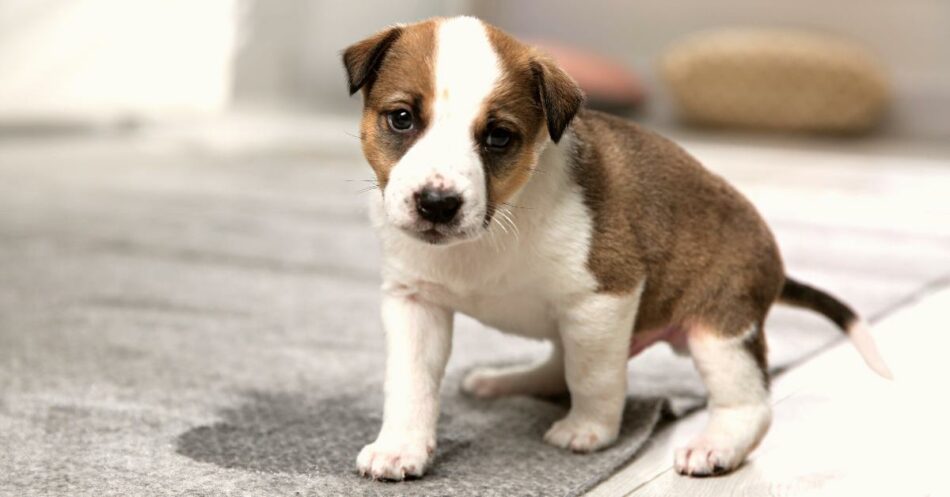
Can Dogs Use a Litter Box? Steps to Get Your Dog Started on Indoor Peeing
This post may include affiliate links. Please read my disclosure policy.
We all know cats are typically the fur family members to use a litter box. But what about dogs? Are there any good arguments for litter box training your canine friend?
And what’s better? A dog litter box or an artificial grass pad?
3 Reasons to Use a Dog Litter Box or Artificial Grass Pad
Walking your dog outside is a good way for them to do their business while providing valuable bonding time. So I rarely advise pet parents to skip this opportunity. That said, there are a few instances when it’s better for your dog to use a litter box.
1. You Live in an Apartment or High-Rise
For pet parents who live in a place where they can’t easily get their dogs outside to use the bathroom, litter box training may be a good idea, especially if you have to descend many stories in an elevator before reaching the outdoors.
This is especially true if you have small dogs, or tiny tinklers, as I call them, since they often have more difficulty holding their urine than bigger dogs. This leads to more accidents in the house and bigger frustrations, which puts a damper on your relationship. I wrote an entirely different article that goes into more detail about why your dog is peeing in the house.
2. You Live in a Climate Where the Weather Is Severe
Now, I’m not talking about a little bit of rain. While many dogs don’t prefer going outside when the weather is anything but clear, it’s not going to hurt them.
But if you live in an area that sees several feet of snow or is primarily paved and gets very hot, an indoor dog litter box might actually be safer for your pet.
3. You or Your Dog Have Mobility Issues
If you or your dog have mobility issues, dog litter box training might be a good idea. For example, if your dog can’t get around easily because of an injury and perhaps you have a lot of stairs to navigate before heading outside, the litter box will help them.
Or if perhaps you’ve been injured or in need of mobility aids like a wheelchair, a dog litter box will help you rest easy knowing your dog has a place to do their business.
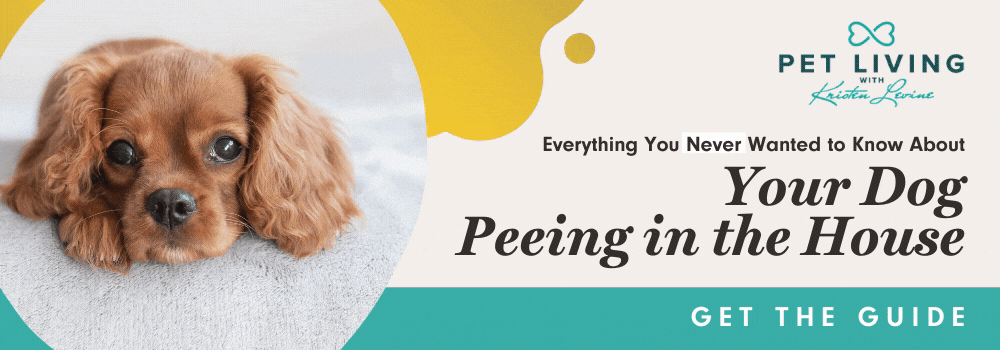
Dog Litter Box or Artificial Grass Pad?
Some companies, like doggybathroom.com, provide modern litter boxes for dogs. The high sides and vertical pee pads help contain your dog’s mess when they go indoor potty. All you need to do is change out the pads and keep the inside clean. This can be a good option for medium-sized dogs that raise their leg to pee.
The downside is the cost. The pee pads are disposable and will need to be replaced frequently. Also, the texture of this indoor potty option is not unlike a towel or other textile in your home, so it’s more likely your dog will pee where you don’t want them to while you’re litter training them.
If you’re dead set on using a dog litter box, ensure the litter box has enough space for your dog to comfortably move around and do their business without stepping in it or feeling too cramped. The best dog litter boxes should have sides that are low enough for your dog to easily step over but high enough to contain the litter. If you prefer the pads, get dog litter boxes with grates or grills that sit above the pad, which’ll allow your pup’s pee to be absorbed while keeping his paws clean.
Now what about artificial grass pads? I favor these over pee pads because they replicate your dog’s natural instinct to pee outside. They’re reusable, so it’s better for the environment and for your wallet. The initial investment for a grass pad like this one is minimal. You can buy extra grass pads to swap out while you’re cleaning dirty ones.
- Artificial turf dog pee pad provides a sanitary place for your pet to relieve themselves inside or on your balcony or patio
- Three layer system that allows liquid to empty into the durable collection puppy pad holder to avoid messes and spills.
- Easy to clean - just rinse the three layers of the dog potty tray with soapy water
Can Dogs Use Cat Litter?
Yes, technically, dogs can use cat litter. However, cat litter can be harmful if ingested, which is a risk since our canine friends are known to eat strange things from time to time. If you don’t want to use pee pads on your dog’s litter box, use litter specific for dogs. Dog litter typically consists of larger, more absorbent pellets, which are safer if ingested. Some are also made with recycled material, like wood or paper.
Pin me!
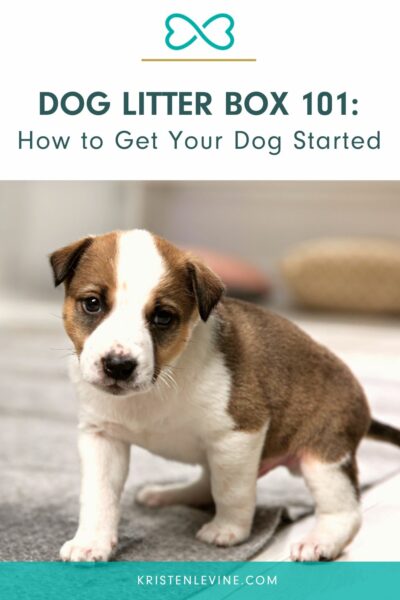
Can You Litter Box Train a Dog?
Whether you choose dog litter boxes or grass pads, will your dog really use them? This is the million doggie bone question. Can pet parents actually get their pups to use a dog litter box? In many cases, the answer is yes, you can.
Now, it’s worth noting that dog litter boxes are best suited for small to medium-sized dogs. Trying to contain a Bull Mastiff in a box while they do their business would be quite a feat! And large dogs tend to raise their leg to pee, so the sides of the dog litter box would have to be very high to avoid soaking surrounding objects.
If you just brought your pup home, start litter box training as soon as possible once he’s comfortable in his new home. Whether you’re using an actual box or artificial turf to potty train your dogs indoors, the methods are basically the same.
Step 1: Find the Right Spot
When house training dogs, we usually bring them outside. So ideally, you’ll place your dog litter box on an outside space, like a covered balcony or porch. But if it has to be indoors, you can place the dog litter box in your bathroom so it’ll be easy to clean.
Step 2: Let Your Dog Know This is Their New Spot
When litter box training your pup, you need to indicate that this new area is their pee spot.
Do this by getting paper towels or puppy pads containing a little of their urine and placing it where you want them to go. It doesn’t have to be a lot but do this as consistently as possible until your dog gets the idea that it’s okay to pee there.
Step 3: Praise Them for Using the Right Spot
Again, just as you would do if training a dog to go outside, be sure to give them lots of praise and some training treats when they do their business in the right spot.
This takes consistency and patience, and you can probably expect some other indoor accidents while you’re in the process. But with time, your dog will understand how to use their new pee spot.
Step 4: Keep it Clean
While you want your dog to understand that this is their new spot, you don’t want it to get gross enough that they won’t use it. And of course, you want your home to be sanitary. We’ll go over some specific steps to cleaning your dog litter box or artificial turf in just a bit.
How to Clean Your Dog Litter Box or Artificial Grass Pad
First, get these supplies:
- Sink or tub
- An enzyme cleaner
- Cotton rags
- A black light
- Space for air drying
For litter boxes, you’ll first need to throw away used pee pads.
Next, you’ll need to use a good enzyme cleaner like this one. Why an enzyme cleaner? Because normal household cleaners don’t eliminate the bacteria that cause the stink.

Here’s where we get a bit science-y. Urine contains biological elements like bacteria that need to be neutralized by enzymes that eat the bacteria. When left to do their job, these enzymes will turn this bacteria into water, which then evaporates. No bacteria, no stink!
However, this is the important takeaway: you need to saturate the area with the enzyme cleaner and then let it work to do its job. The “spray and wipe away” approach will not work because the cleaner has not had enough time to eat the bacteria, preferably 8-12 hours. So here’s what you do:
For all large hard plastic surfaces, apply the enzyme cleaner generously, making sure it covers the entire surface, even areas that you may not expect urine to be. Using your rag, gently spread the cleaner over the surface so every inch is wet. Let it air dry.
For a smaller indoor potty, like small grass pads, rinse the area off in the sink or tub. Then fill the sink or tub with warm to hot water and add 1/4 cup of Kinderbean No Stress Mess Eraser. Let soak overnight. In the morning, rinse everything thoroughly and let it air dry.
The enzyme cleaner will eliminate the odor and your dog will have a fresh place to do business again!
The Tail End
It’s always preferable to cater to your dog’s natural instincts to go outside, but if that’s not possible, you can absolutely train your dog to go inside and keep your home smelling clean and fresh.
Does your dog have pee problems? Do you have a tiny tinkler or an anxious pee-er? Download my free “pee book,” Everything You Never Wanted to Know About Your Dog Peeing Indoors!





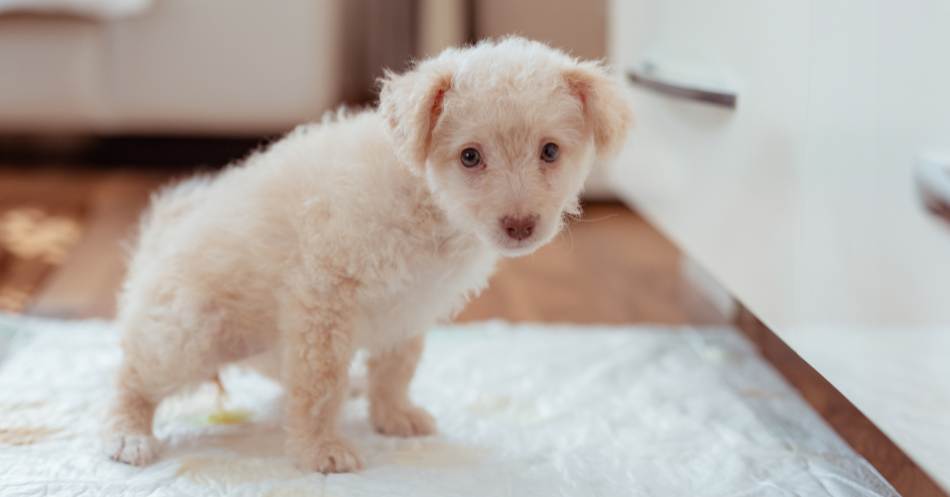
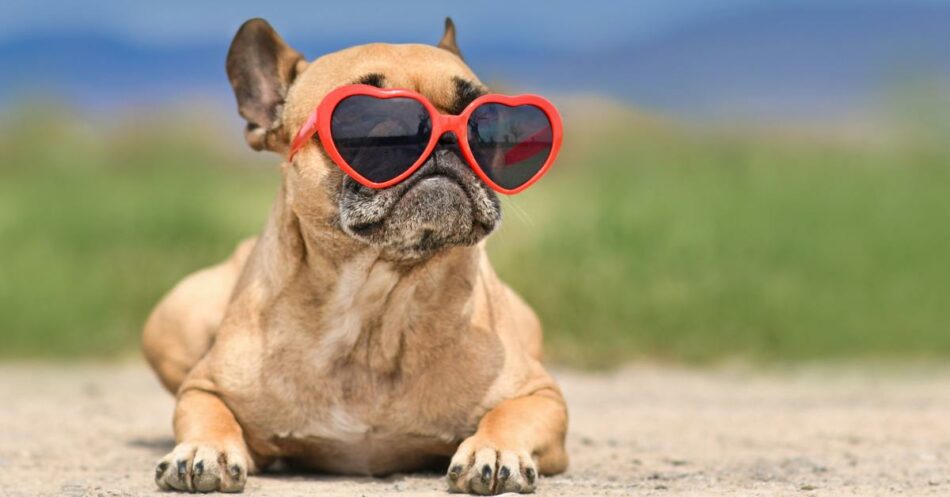
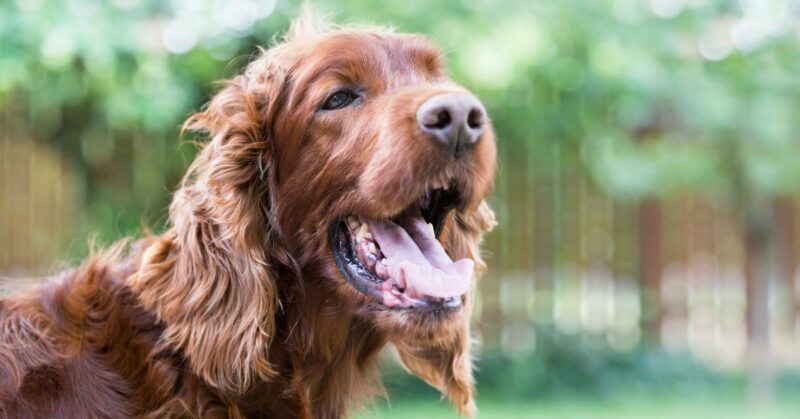
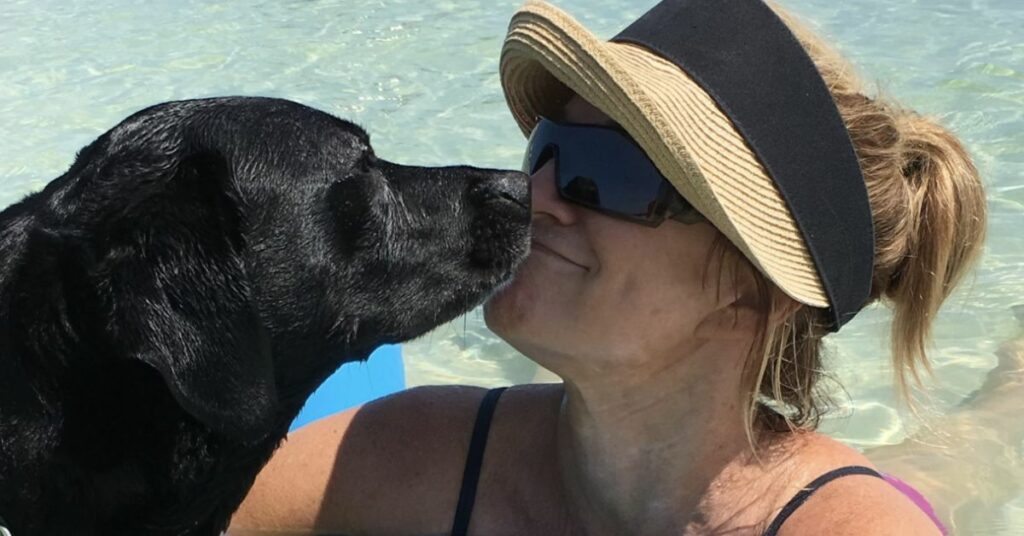
my little dog uses litter box with kitty litter, I found the grass pads too difficult to clean